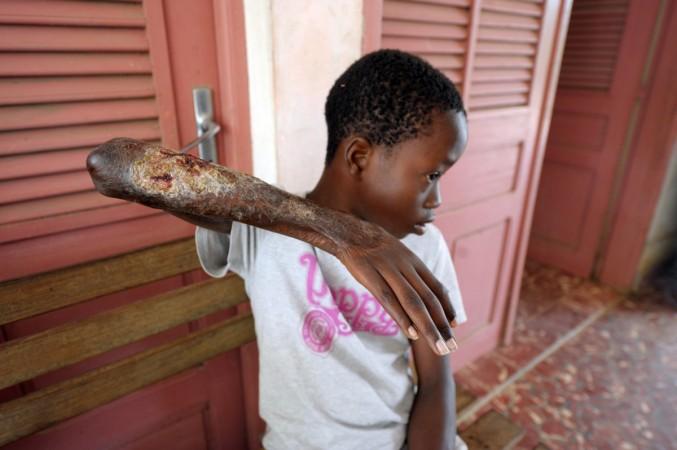
Buruli ulcer is a disease caused by the bacterium Mycobacterium ulcerans. It mostly affects the skin but can also affect the bone. The infection often leads to ulcers on arms or legs, destroying the skin or soft tissue. If not treated properly, it can cause irreversible deformity or long-term functional disability. The flesh-eating bacteria are currently multiplying at a rapid rate in parts of Australia.
The rapid rise in the numbers has been recently highlighted in the Medical Journal of Australia. "[In Victoria], the community is facing a worsening epidemic, defined by cases rapidly increasing in number, becoming more severe in nature, and occurring in new geographic areas," author Daniel O'Brien said in a statement. "In 2016, there were 182 new cases — the highest ever reported by 72 percent. Yet, cases reported until 11 November 2017 have further increased by 51% compared with the same period in 2016."
Symptoms
The symptoms of the Buruli ulcer include destroyed skin and soft tissue, swelling of the skin, one or more slow-growing painless ulcers. People with the symptoms should see a doctor and get antibiotics, according to Centers for Disease Control and Prevention.
Treatment
According to WHO, treatment consists of a combination of antibiotics and complementary treatments. Different combinations of antibiotics are given to the patient to have it for 8 weeks. It helps in treating the Buruli ulcer irrespective of the stage.
However, the drugs are too expensive for patients to purchase it privately. "These antibiotics have severe side effects in up to one-quarter of patients, and many people also require reparative plastic surgery, sometimes with prolonged hospital admissions," O'Brien explained.
Prevention
Since it is not known how Buruli ulcer is transmitted, preventive measures cannot be applied. "Despite being recognized in Victoria, Australia since 1948, efforts to control the disease have been severely hampered because the environmental reservoir and mode of transmission to humans remain unknown," O'Brien explained. "It is difficult to prevent a disease when it is not known how infection is acquired."
















